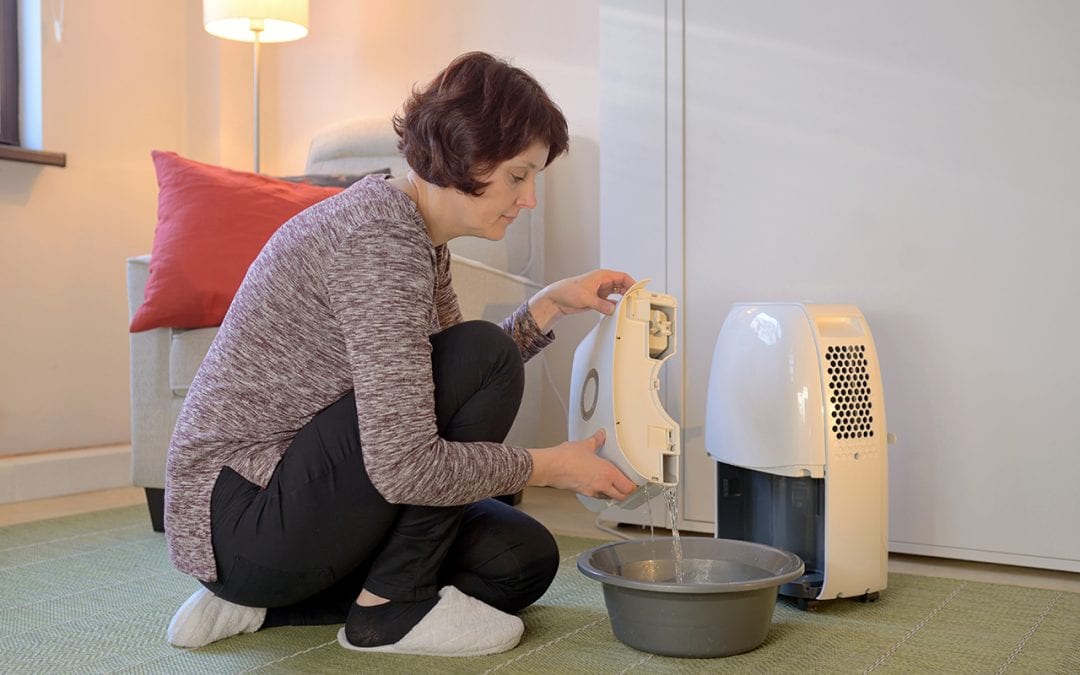You probably don’t often think about the amount of moisture in your home until the humidity reaches uncomfortable levels. Too much humidity is always uncomfortable, but did you know that the amount of humidity in your home can also affect the condition of your home and your family’s health? Reducing the humidity in your home can provide many benefits.
Humidity Makes Your Home Feel Warmer
During the summer, excess moisture makes your home feel warmer than what your thermostat reads. So if your home has high humidity, your AC will need to work harder to keep your home cool. Controlling the amount of moisture by reducing the humidity in your home helps your AC unit run more efficiently.
Mold Thrives in High-Humidity Environments
Mold and mildew, which cause a variety of health problems and worsen already existing ones, thrive in a damp and warm environment. These microbes also eat away at your house’s walls and ceilings, porous floors like carpets and wood, and stain fabrics.
Inhaling mold spores can cause allergies, headaches, and a long list of health problems. When your residence no longer offers these microorganisms moisture, they are unable to thrive and your home can go through mold remediation to prevent future problems. Reducing the humidity in your home is one step you can take to keep a home mold issue at bay.
Reducing the Humidity in Your Home is Possible
Using a dehumidifier is an effective method for reducing humidity in your home. However, this approach solves the problem once the air already contains moisture. Preventing excess humidity in the first place protects your home’s materials from ever absorbing moisture, which can cause damage to your home. Damaged drywall and other materials pose safety risks and ideal nesting places for pests.
Many insects like ants and termites require a nearby water source. Locating the source of excess moisture keeps your home drier and less inviting to these pests. Home inspectors using an infrared thermal imaging camera can identify areas of water intrusion otherwise not visible to the naked eye. You might find that the problem is loose shingles or siding, or a wet area in an otherwise dry basement. Other common sources include condensation on heating and cooling pipes and tubing, slow leaks on water supply lines, cracked drain pipes, leaking toilet bases, and many other areas. Correcting these problems can help you reduce the amount of humidity in your home without much work.
Ways to Keep Daily Activities from Increasing the Amount of Humidity in Your Home
If you have an exhaust fan in your bathroom, using it during showers will help keep humidity down. This also applies to your kitchen. Using the exhaust fan over the stove when cooking will cut down on the amount of steam and moisture that cooking adds to your home’s air.
However, this only works if the ducts lead out of your home correctly. Any breaks in the tubing can let that water vapor into your attic. Tubing that is too long can allow the water to condense on the inside and slowly leak into the air. Confirming that ducts are free of cracks, tears, and holes, and are only as long as needed, and also attached to the vent correctly, will keep moist air out of your home.
Reducing humidity in your home can make you feel more comfortable, healthier, and keep your home in better shape. It is worth the small effort it takes to control the humidity levels of your home and reap the benefits.
Florida Superior Inspections provides home inspections including free thermal imaging to the Greater Tampa area and beyond. Contact us to book an appointment.

